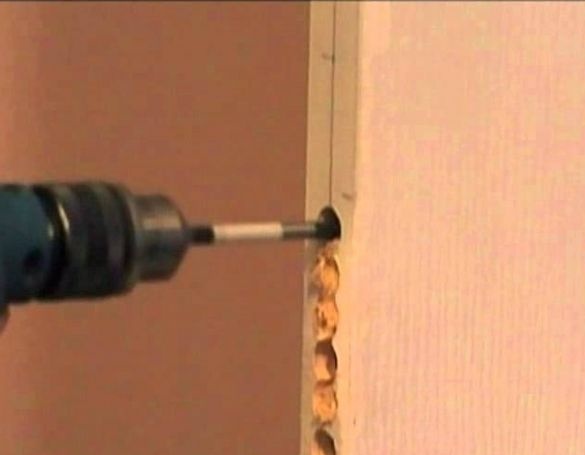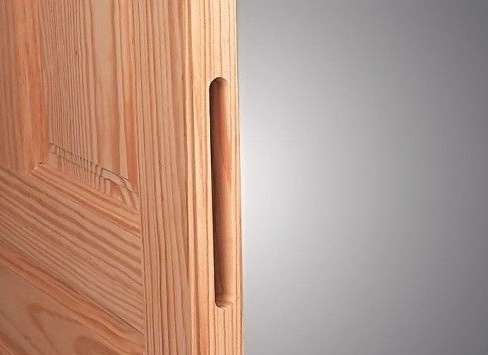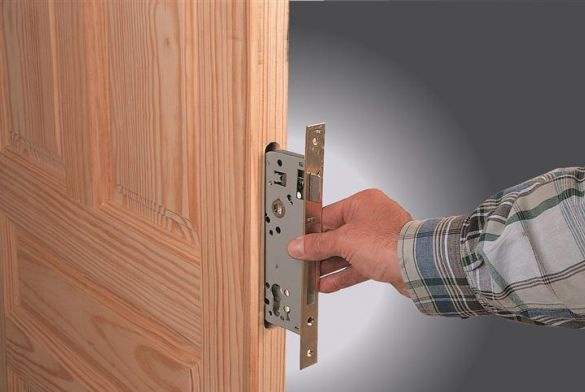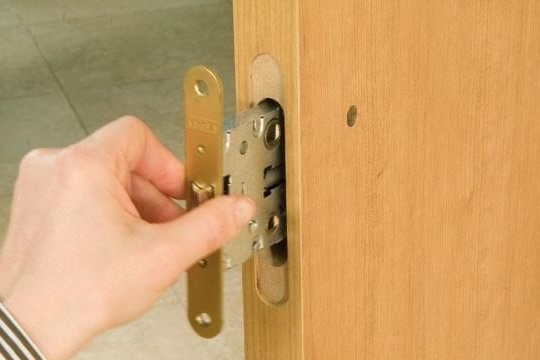
The lock in your door is out of order and needs to be replaced urgently? Are you concerned about your safety and have you decided to install an additional lock? There is no need to pay money for this work, because you can do it yourself. How? This will be discussed below.
For starters, a bit of theory. So, there are three types of locks, namely: mortise, padlock and patch. And if with padlocks and overhead locks no installation problems arise due to their simple design, then with mortise locks the situation is more complicated, therefore we will analyze the installation of such locks in more detail.
The mortise lock owes its name to a special type of installation - it completely hides in the door, as if it "crashes" into it. Thus, the castle is hidden from the eyes of possible criminals, which complicates its opening and protects the castle from external damage, because it cannot be torn or knocked down.
The first step is to prepare the tools. To install the lock, we need: a drill, several special pen drills (the so-called "feathers") for wood, a hammer with a chisel, a construction tape measure and an ordinary pencil / sharp knife for precise marking and measurements.
First, you should remove the door from the hinges or fix it in such a way that it does not move during operation, complicating it.
After we begin to carry out marking, taking into account the fact that the locking mechanism of the lock should be located as far as possible in the center of the door leaf. When marking, attach the lock with its internal part, the one that will later be hidden inside the canvas, and circle it with a pencil or a sharp knife, drawing the outline of the lock on the end of the door.
Now you can start drilling the grooves under the lock. To do this, take a drill with a pen drill several millimeters in diameter larger than the thickness of the lock and drill a series of grooves along the entire length of the contour of the lock applied to the blade. Pay attention to the fact that the depth of the drilled holes should not only correspond to the length of the castle itself, but also be a few millimeters deeper so that in the future this castle can be “drowned” in the door to the thickness of the castle bar.Determining the correct depth and thickness of the holes for the lock, you should be guided by the following rule: they must allow the lock to enter the door, while wrapping it tightly; the lock should not hang too loose in the door.
Having received an almost ready hole for the lock, if necessary, correct it with a chisel, removing, where necessary, a couple of millimeters.
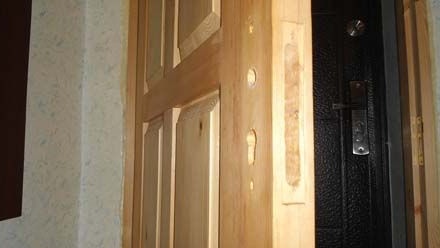
The next step is to drill holes for the lock mechanism (the so-called "larva") and the door handle, if any, in your lock. To do this, you need to attach the lock to the door leaf and make the necessary markings on the canvas with a pencil, taking into account that such holes should be slightly offset, taking into account the thickness of the strip of your lock.
Having drilled all the necessary holes, we proceed directly to the installation of the lock. To do this, insert the locks into the groove we received so that it does not protrude beyond the door line, draw with a pencil the holes that need to be drilled in the door to secure the lock, and drill them with a drill, the diameter of which is slightly less than the diameter of the screws. Having drilled holes, we fix the lock in the door and proceed to the final stage.
Finally, we proceed to install the strike plate in the door frame for the lock. The most effective way to accurately mark the holes for the strike plate is as follows: you need to rub the crossbars of the lock with chalk, close the door and try to close the lock several times, resting the crossbars against the box. As a result, chalky traces will remain on the door jamb exactly in the place where it is necessary to drill holes.
Having decided on the place of drilling, with the same pen drill and drill we make the required number of holes, helping ourselves, if necessary, with a chisel. After we apply the reciprocal level to the drilled holes, and mark its borders with a pencil or a sharp knife.
Having marked the place for the reciprocal level, with the help of a chisel we make the necessary recess for it so that it enters the door jamb flush with it; we fasten it with self-tapping screws, having previously drilled holes for them with a thin drill.
That's all - the installation of the lock is finished!

